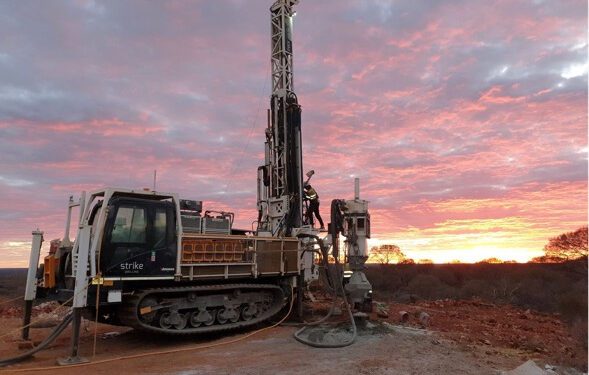Western Australian nickel company St George Mining Limited (ASX: SGQ) has resumed diamond drilling at its flagship high-grade Mt Alexander Project, located in the north-eastern Goldfields.
Drilling will focus on testing high-priority targets identified from the seismic survey recently completed at Mt Alexander. The first target to be drilled is S1. This large seismic target is modelled with a dip-extent of 450m and located down-dip from and within the same Cathedrals Belt structure that hosts extensive massive nickel-copper sulphides drilled at Investigators.
S1 is located within Exploration Licence E29/548 (100% St George).
“I am delighted that we have been able to commence our drilling so early in the New Year. The 2022 diamond drilling is our first-ever drilling of seismic targets and the results will be keenly anticipated by all shareholders,” Executive Chairman, John Prineas, said.
“Our excitement has been dialled up with initial findings from the St George-CSIRO research project that the Cathedrals Belt intrusions are associated with the Warakurna Large Igneous Province, significantly increasing the prospectivity for us to discover more large-scale Ni-Cu-PGE mineralisation at Mt Alexander.
“We wish our shareholders and service providers a happy and safe New Year and look forward to reporting results from our drilling programme in the coming weeks.”
Drilling will initially be carried out by a single crew with one shift per day. COVID-19 regulations and border restrictions have delayed the arrival of the second crew. It is expected that drilling will be carried out 24/7 with two crews within two weeks.
WARAKURNA LIP – TECHNICAL IMPLICATIONS
St George and CSIRO commenced a research project in 2021 aimed at characterising the unique nickel- copper sulphide mineralisation and intrusive geology in the Cathedrals Belt. The purpose of the project is to better understand the generation and emplacement mechanism behind the mineralised intrusive system, which may provide an insight into the most prospective areas to host further high-grade Ni-Cu- PGE mineralisation in the project area.
CSIRO is Australia’s peak scientific research authority and has world-leading expertise in producing ore genesis models for nickel sulphide deposits.
Studies by CSIRO of mineralisation from the Cathedrals Belt have dated the host intrusions at approximately 1.1Ga, linking the mineralisation to the Proterozoic-age Warakurna Large Igneous Province (LIP) – a very large igneous event that spans from central Australia to the west coast of Western Australia.
LIPs around the world are known to host significant Ni-Cu-PGE deposits, with examples including the giant Norilsk-Talnakh deposit in Siberia and multiple deposits within the Duluth Complex in the Lake Superior region of North America.
In Western Australia, the very large Nebo-Babel deposit is hosted within the Warakurna LIP.
Layered mafic-ultramafic intrusions and a complex plumbing system of sills and dykes are common features of LIPs. This kind of architecture is typical across the Cathedrals Belt.
Petrographic studies by St George on the mineralisation at Investigators confirmed that massive Ni-Cu sulphides are hosted within gabbronorite, a common host to significant Ni-Cu mineralisation around the globe. At Nebo-Babel, massive Ni-Cu sulphides are also hosted within gabbronorite.
The research project with CSIRO is expected to conclude within the next month. We look forward to reporting other significant findings on the architecture and emplacement mechanisms for the Cathedrals Belt.
COVID-19:
St George continues to manage its operations in compliance with COVID-19 regulations issued by State and Commonwealth authorities. We proactively manage drilling and other field programmes to protect the health and safety of our team and service providers.
Border restrictions in Western Australia and elsewhere have impacted the movement of personnel for drill rig crews, which is constraining the availability of drill rigs. St George is in close contact with its drilling contractors to best manage access and continuity to drilling services.
About the Mt Alexander Project:
The Mt Alexander Project is located 120km south south-west of the Agnew-Wiluna Belt, which hosts numerous world-class nickel deposits. The Project comprises six granted exploration licences – E29/638, E29/548, E29/962, E29/954, E29/972 and E29/1041 – which are a contiguous package. A seventh granted exploration licence – E29/1093 – is located to the south-east of the core tenement package.
The Cathedrals, Stricklands, Investigators and Radar nickel-copper-cobalt-PGE discoveries are located on E29/638, which is held in joint venture by St George (75%) and Western Areas Limited (25%). St George is the Manager of the Project, with Western Areas retaining a 25% non-contributing interest in the Project (in regard to E29/638 only) until there is a decision to mine. All other Project tenements are owned 100% by St George.
For further information please visit: https://stgm.com.au/












